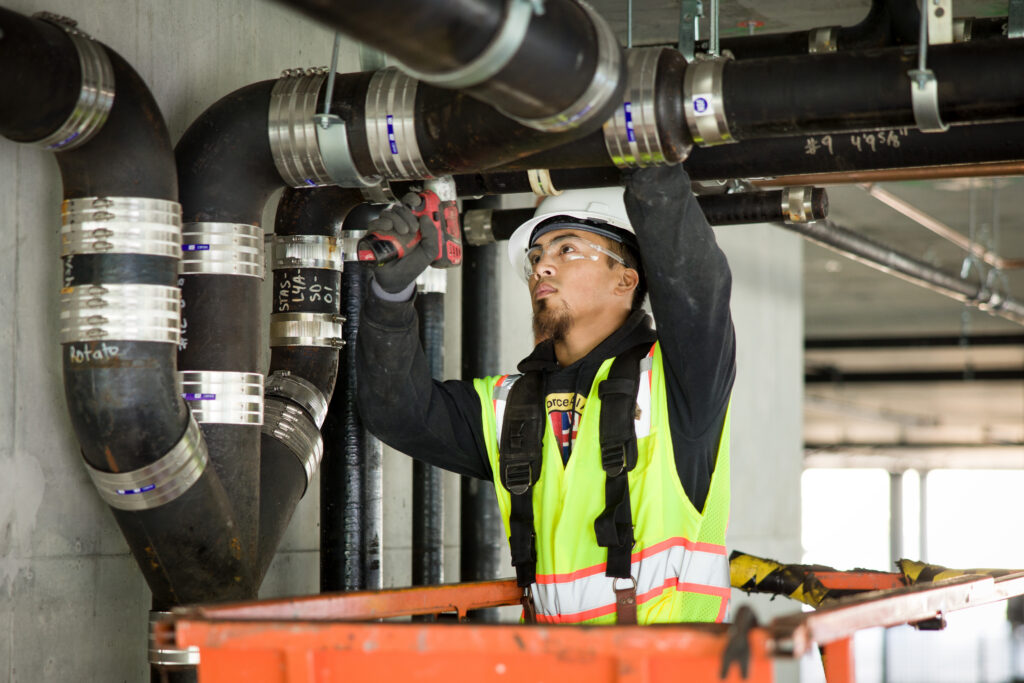Energy-Efficient Plumbing Solutions for Sustainable Commercial and Residential Buildings

In an era where environmental sustainability is a top priority, commercial and residential buildings have a vital role to play. From energy-efficient lighting to renewable energy sources, businesses are actively seeking ways to reduce their carbon footprint. However, one often overlooked aspect of sustainability is the plumbing system. In this blog post, we will explore energy-efficient plumbing solutions that contribute to sustainable buildings.
Low-Flow Fixtures:
One of the most effective ways to conserve water and energy is by installing low-flow fixtures throughout the building. Low-flow faucets, showerheads, and toilets significantly reduce water consumption without compromising performance. These fixtures use innovative design features, such as aerators and flow restrictors, to maintain adequate water pressure while minimizing wastage. By incorporating low-flow fixtures, businesses can save water, reduce energy required for water heating, and lower utility costs.
Water Heating Efficiency:
Hot water consumption accounts for a substantial portion of a building’s energy usage. Optimizing water heating systems can yield significant energy savings. Installing energy-efficient water heaters, such as tankless or heat pump models, can reduce energy consumption by providing hot water on demand. Insulating hot water pipes and using recirculation systems with timers or sensors can minimize heat loss and reduce the need for constant reheating. Implementing these measures promotes energy efficiency and decreases operating costs.
Greywater Recycling:
Greywater recycling systems offer a sustainable solution for water reuse within buildings. Greywater refers to lightly used water from sinks, showers, and laundry facilities. By implementing a greywater recycling system, this water can be treated and repurposed for non-potable applications such as toilet flushing or irrigation. Greywater recycling reduces the strain on freshwater resources, decreases water bills, and helps achieve sustainable water management goals.
Rainwater Harvesting:
Rainwater harvesting is an excellent way to supplement water supply for non-potable uses. By collecting rainwater from rooftops and other surfaces, buildings can harness a natural resource and reduce reliance on municipal water supplies. Captured rainwater can be stored in tanks and used for landscape irrigation, cooling tower makeup, or toilet flushing. Rainwater harvesting not only conserves water but also reduces demand on energy-intensive water treatment processes.
Smart Water Management Systems:
Advancements in technology have paved the way for smart water management systems in buildings. These systems integrate sensors, real-time data monitoring, and automated controls to optimize water usage. By detecting leaks, monitoring water flow, and adjusting usage based on occupancy patterns, smart systems ensure efficient water management. Additionally, these systems can provide valuable insights and analytics, empowering facility managers to make informed decisions for further conservation.
Energy-efficient plumbing solutions are essential for creating sustainable commercial and residential buildings. By implementing low-flow fixtures, optimizing water heating systems, embracing greywater recycling and rainwater harvesting, and adopting smart water management systems, businesses can significantly reduce water consumption and energy usage. These measures not only contribute to a greener future but also result in cost savings and improved operational efficiency. Embracing energy-efficient plumbing is a win-win solution that benefits both the environment and the bottom line.
